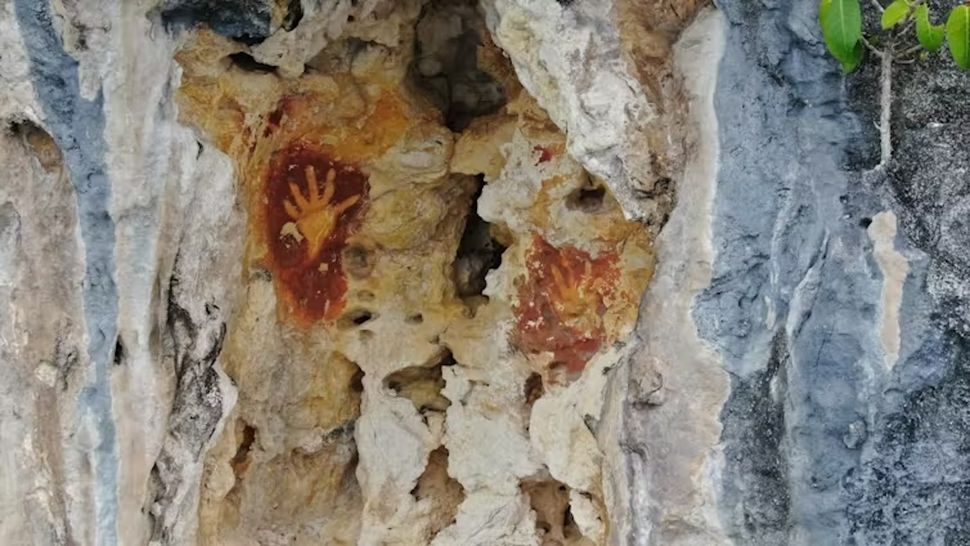Humans were living near West Papua at least 55,000 years ago, study finds
By Dylan Gaffney, Daud Aris Tanudirjo
published 18 hours ago
New evidence from West Papua offers fresh clues about how and when humans first moved into the Pacific

Hand stencils of unknown age from the Raja Ampat Islands. Research from these islands sheds light on early human history. (Image credit: Tristan Russell, CC BY-SA)
In the deep human past, highly skilled seafarers made daring crossings from Asia to the Pacific Islands. It was a migration of global importance that shaped the distribution of our species — Homo sapiens — across the planet.
These mariners became the ancestors of people who live in the region today, from West Papua to Aotearoa New Zealand.
For archaeologists, however, the precise timing, location and nature of these maritime dispersals have been unclear.
Hand stencils of unknown age from the Raja Ampat Islands. Research from these islands sheds light on early human history. (Image credit: Tristan Russell, CC BY-SA)
In the deep human past, highly skilled seafarers made daring crossings from Asia to the Pacific Islands. It was a migration of global importance that shaped the distribution of our species — Homo sapiens — across the planet.
These mariners became the ancestors of people who live in the region today, from West Papua to Aotearoa New Zealand.
For archaeologists, however, the precise timing, location and nature of these maritime dispersals have been unclear.
More:
https://www.livescience.com/archaeology/humans-were-living-near-west-papua-at-least-55-000-years-ago-study-finds
